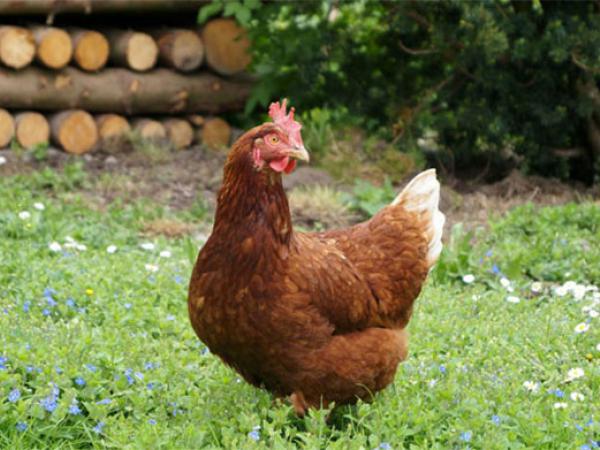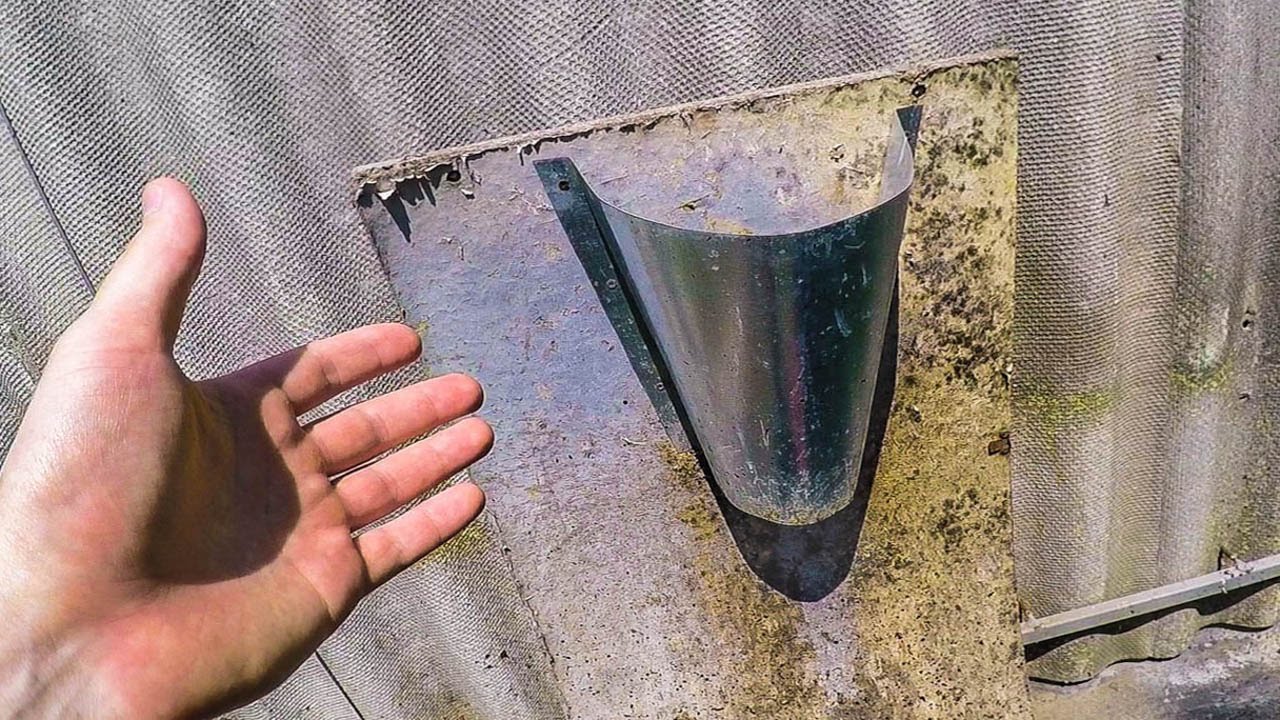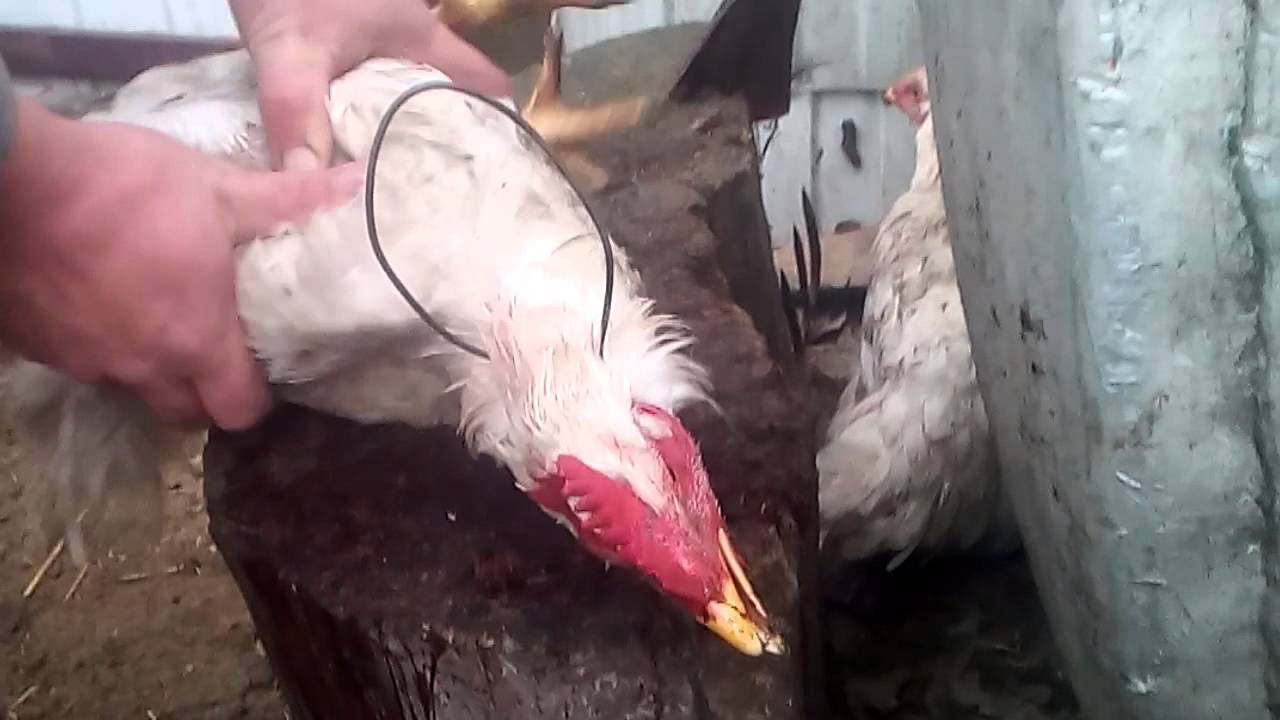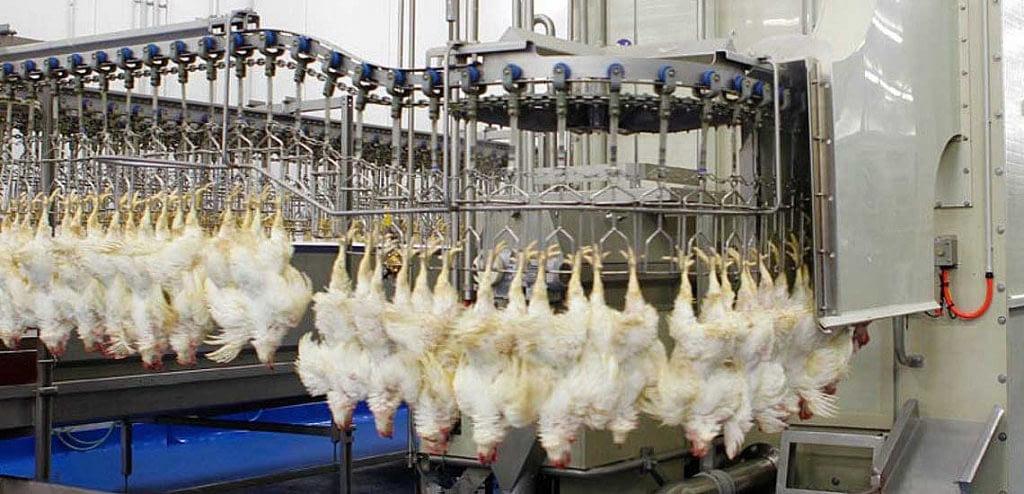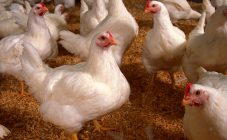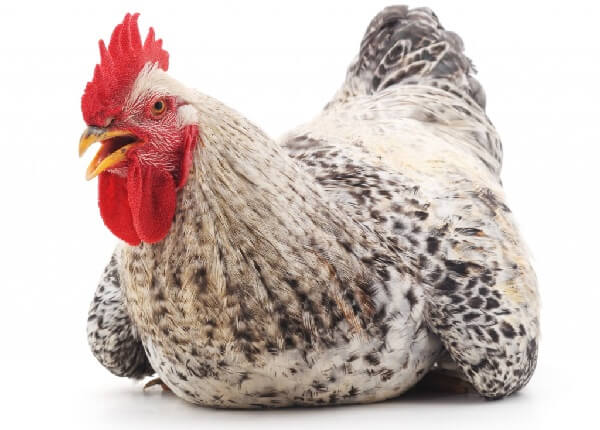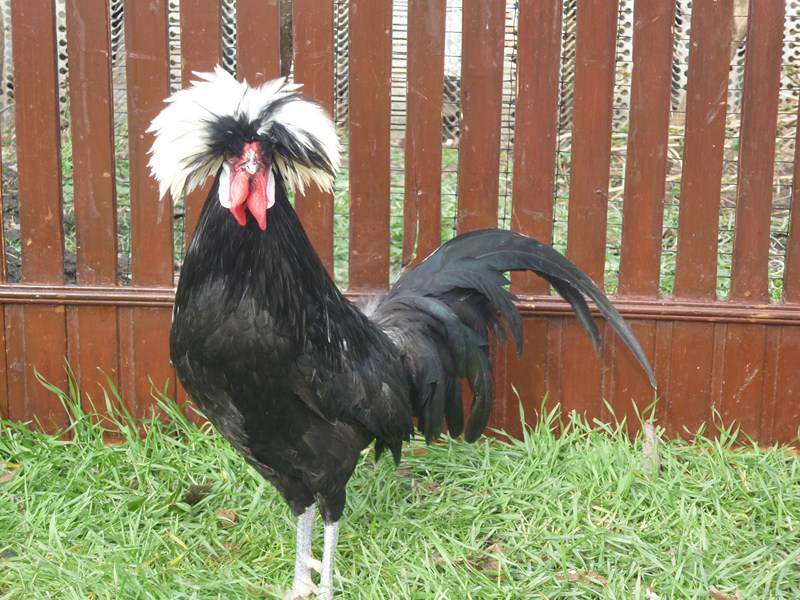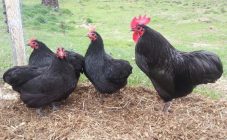Content:
Raising chickens for meat is a process that requires certain experience and knowledge. Basic knowledge of bird feeding combined with good housing conditions results in good feeding results. But when the flock is ready for slaughter, the main question remains unresolved: how to slaughter the chicken and what to do next with the preparation of the carcass for culinary use?
Raising chickens for meat
Keeping meat breeds of chickens differs from the breeding of birds of egg and mixed type. They need special conditions and a diet that promotes rapid weight gain. It is advisable to select early maturing breeds and crosses for fast fattening and production of products with high taste. The older the chicken, the worse the taste of the chicken. Broiler crosses and early ripening representatives of the meat and meat-egg direction are considered ideal breeding options.
The most popular beef breeds and crosses are described in the table.
| Name | Feeding time | Specificity of nutrition and maintenance | Benefits | disadvantages |
|---|---|---|---|---|
| COBB-500 | Reach a weight of 2.3-2.7 kg by 40-45 days. | Standard broiler feeding scheme. Hypersensitivity to changes in air temperature and a slower growth rate of plumage are taken into account. | Fast growth, profitability, marketable and taste qualities of meat products, unpretentiousness. | Frequent illnesses and high demands on feed quality. |
| ROSS-308 | The minimum feeding time is 6 weeks. During this period, the chickens reach 2.1-2.5 kg. | Traditional technology. Intensive hygienic care is required in the first weeks and regular use of antibiotics to prevent diseases. | Record growth rate, low cost of meat products combined with high palatability. | High mortality rate up to 7 days. Weak immunity. |
| Change | It takes 40-45 days to feed. This time is enough to grow chickens up to 2.25-2.5 kg. | A stable air temperature of 30-32 degrees should be organized in the first days of containment, reduced slowly and gradually. Protect the herd from drafts and moisture. Feeding and care is the same as standard. | Low feed costs, strong immunity, high survival rate (95-96%). | Hypersensitivity to cold, drafts and high humidity. |
| Hybro-6 | 6-8 weeks for fattening chickens up to 2-2.1 kg live weight. | Unpretentious, viable and omnivorous birds that do not require specific care. | Low feed consumption (up to 3.5-3.7 kg per 2 kg of mass), omnivorous, low mortality rate (up to 3%). | Comparatively low meat productivity. |
| ROSS-708 | The record growth rate is up to 2.7-2.9 kg in 45-48 days. | Requires the use of protein feed with a percentage above 25%. | High rate of weight gain, readiness for slaughter in 35-40 days, unpretentiousness. | High feed consumption, increased requirements for their quality. |
For fans of exotic breeds of meat-class chickens with unusual taste, there are special breeds. Faverolle, La Flash - French laying hens whose meat tastes like game. Silki, Kadaknat, Ayam Tsemani are exotic chickens with black meat and bones that taste like rabbit meat.
Basic rules for keeping and growing broilers that every poultry breeder should know:
- chickens are sorted by sex during the first week - cocks and hens are fed separately.A three-stage feeding system is observed: starting, growing and finishing rations;
- disease prevention measures are applied. An optimal microclimate is created (air temperature according to age, humidity 55-60%);
- a fenced spacious walk is being set up for the activity of the poultry, which improves the taste of meat;
- a comfortable poultry house is set up with a deep bedding for floor keeping;
- cage raising is possible, but this increases the percentage of fat in the beef.
For each individual species, the correct organization of feeding is required. The regime is observed - 3-4 meals daily during the feeding period. Feed for raising chickens for meat must contain at least 20% proteins, as well as a full range of mineral compounds and vitamins.
Slaughter and butchering at home
Before slaughtering a chicken, you should carefully prepare for the slaughter process. Since it is difficult to organize a full-fledged slaughter at home, it is necessary from the beginning to think over the most convenient temporary butchery shop.
What you need to cook:
- cones for poultry - this device greatly facilitates the process and allows you to quickly bleed the carcass, which has a positive effect on its taste and market characteristics;
- a sharp thin knife or specialized scissors, depending on the chosen method of slaughter;
- containers for collecting blood;
- carcass cutting table;
- a container with boiling water in order to facilitate the plucking process;
- a burner that can be used to burn the remaining feathers;
- knives and cutting boards and everything that is needed for packaging and storage (bags, freezer).
Before cutting the chicken, it needs cooking. To do this, several steps should be taken, which must be started a day before the expected date of slaughter:
- individuals that are planned to be killed should be isolated in a clean room free of droppings and dirt;
- the day before the date of slaughter, you need to stop feeding the selected individuals;
- to obtain a high-quality feather, it is necessary to redeem chickens;
- during the day, chickens are drunk with a solution of Siberian salt and given water in order to completely cleanse the digestive tract of food and feces.
There are two popular methods of slaughtering poultry - indoor and outdoor. How to slaughter a chicken correctly using these techniques is presented in the table.
| Internal | Outdoor |
|---|---|
| Pre-stun the chicken. | Hold the beak and head with your left hand. |
| Grab your head with your hand, hold it, throwing it back slightly. | Stun a chicken with a blow to the head. This must be done sharply so that the bird does not suffer. |
| With thin scissors or a knife, you need to make a sharp injection through the beak - there is the jugular vein and it must be cut. | Make an incision on the right, 1 cm below the earlobe. |
| After that, immediately remove the knife and make a second injection, slightly deviating to the right side, where the cerebellum is located. | Cut the vein on the left side symmetrically. |
| Hang the bird upside down in the bleeding cone. | Hang in a cone or just by the paws so that all the blood flows out. |
The internal slaughtering technique is complex and requires some experience, which is why many poultry farmers do not practice it.There is also a simpler, folk method, but it is more suitable for those purposes when the meat will be used immediately after slaughter.
How to chop off a chicken's head:
- Spin the chicken in place (it loses orientation and stops resisting), or slightly stun it with a blow to the head.
- Lay on an impromptu block (wooden stump).
- Cut off your head.
- Hang up to completely drain the blood.
At home, the slaughter of chickens must be carried out taking into account sanitary and hygienic requirements, otherwise the resulting meat products may be dangerous for consumption.
Before slaughtering a chicken, it is advisable to tie its paws. There is a risk of maintaining motor function even after decapitation. Of course, a killed laying hen will not go far, but such a measure will greatly facilitate the process.
Slaughter of roosters and broilers
For slaughtering broilers and roosters at home, similar techniques are used, but there are some nuances that should be considered. How to hack down a rooster or broiler at home - below is a step-by-step scheme:
- Before stabbing a rooster, you should prepare it for this process, keep it in hunger, clean it of dirt and droppings.
- Males and broilers should have their feet tied tightly just before slaughter.
- The rooster should be fixed and its head should be cut off with a light, but very sharp ax.
- Immediately thereafter, it is suspended for exsanguination.
In the case of roosters and broilers, the external and internal method can be used; the simplest option is described above, which is easiest to implement at home without special skills.
Slaughter technology at poultry farms
If it is necessary to score a large batch, special technologies are used at poultry farms and processing plants. In commercial poultry farming, as a rule, a special workshop with several departments is prepared for slaughter in order to quickly slaughter, cut and send for further processing or sale.
How chickens are killed in a poultry farm - the main method:
- The bird is initially prepared - it is caught in a day and passes the stage of cleaning the digestive tract from food debris.
- If it is necessary to transport it to the slaughterhouse, the bird is seated in large boxes and sent to its destination. Receptionists calculate, measure body weight in accordance with special standards.
- Electric current is used to stun the bird before chopping the chickens.
- After stunning, bleeding is performed for 30-60 seconds. If time is missed, the blood in the body of a dead bird will have time to coagulate and the resulting carcass will not be sent for further use.
- For bleeding, carcasses are suspended on special devices by their paws.
- After 15-20 minutes of exsanguination, primary processing is performed - with the help of a special technique or manually, the carcasses are plucked, the paws are cut off and cut.
Primary processing of poultry
Before cutting a live chicken, it is necessary to prepare everything for the primary processing of the poultry, which consists in the following steps:
- Plucking and singing carcasses - complete removal of feathers. This should be done immediately after exsanguination. The chicken is dipped in boiling water for 10-15 seconds or treated with steam, after which all large feathers are removed manually or using a special machine. After that, the carcass is treated with fire to singe the remaining small feathers.
- The next stage is evisceration. Processing knives must be extremely sharp. The lower abdomen is cut open and the insides are removed from it, which can be immediately used for frying or frozen.After evisceration, you can immediately start packing the bird for storage or shred and process it into semi-finished products.
- The final stage is cooking. You can immediately cut the finished carcass into portions, cut the fillet for a shish kebab, separate the skeletal part for broths, or grind the meat into minced meat.
Useful Tips
Experienced poultry farmers who have been breeding meat-class chickens for years have their own exclusive techniques and secrets that accelerate the process of slaughtering, processing and butchering poultry. Some tips to make this process easier are presented below:
- if you are planning long-term breeding of chickens for meat, it is recommended to acquire a useful device - a perk. This device allows you to remove feathers 3 times faster;
- in order to get meat carcasses with a minimum fat content, it is necessary to transfer chickens to a low-calorie, protein-rich diet 3 weeks before slaughter;
- if you plan to prepare stew from chicken meat, it is better to initially keep the carcass in the freezer for 2-3 days;
- if old chickens are sent for slaughter, their meat will be too tough. It is easy to fix the situation - you need to boil it in water, after placing a dense glass container (a faceted glass, a carafe cork) in it. You can use meat for minced meat;
- if the sale of carcasses is planned, immediately after cutting, they should be immersed in ice water for 5-10 minutes. Due to this, the meat will be stored longer and the presentation will improve.
Knowledge of simple technologies for growing, fattening and slaughtering chickens for meat production will help to achieve good results in this type of poultry farming.
